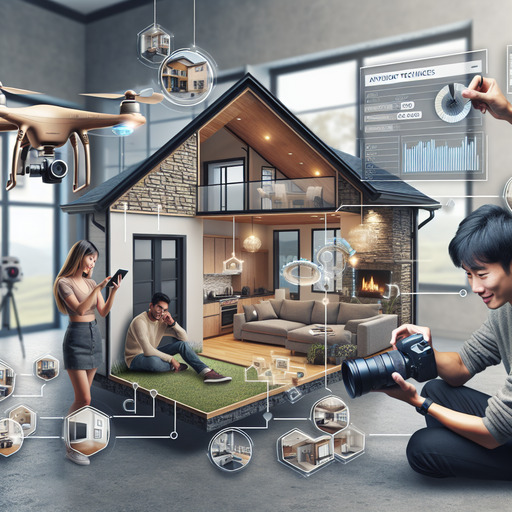
-
Table of Contents
- Mastering Real Estate Photography: Tips, Techniques, and Tools
- Understanding the Importance of Real Estate Photography
- Essential Real Estate Photography Tips
- 1. Mastering the Art of Lighting
- 2. Choosing the Right Equipment
- 3. Composition and Angles
- Advanced Techniques: Real Estate Drone Photography
- Editing and Post-Processing
- Pricing Your Real Estate Photography Services
- Conclusion
- Questions and Answers
Mastering Real Estate Photography: Tips, Techniques, and Tools
In the competitive world of real estate, first impressions are everything. High-quality real estate photography can make or break a property listing, influencing potential buyers’ decisions before they even step foot inside. Whether you’re a seasoned photographer or a real estate agent looking to enhance your listings, understanding the nuances of real estate photography is crucial. This guide will walk you through essential tips, techniques, and tools to elevate your property photography game.
Understanding the Importance of Real Estate Photography
Real estate photography is more than just snapping pictures of a property. It’s about capturing the essence and potential of a space, enticing buyers to envision themselves living there. According to the National Association of Realtors, 87% of home buyers found photos to be the most useful feature of online listings. This statistic underscores the importance of investing in quality photography to make your listings stand out.
Essential Real Estate Photography Tips
1. Mastering the Art of Lighting
Lighting is a critical component of real estate photography. Proper lighting can highlight a property’s best features and create a welcoming atmosphere.
- Natural Light: Shoot during the golden hours (early morning or late afternoon) to take advantage of soft, natural light.
- Artificial Light: Use additional lighting equipment to fill in shadows and ensure even lighting throughout the space.
2. Choosing the Right Equipment
Investing in the right real estate photography equipment can significantly impact the quality of your photos.
- Camera: A DSLR or mirrorless camera with a wide-angle lens is ideal for capturing expansive interior shots.
- Tripod: A sturdy tripod ensures stability and allows for longer exposure times in low-light conditions.
3. Composition and Angles
Composition plays a vital role in real estate photography. The right angles can make rooms appear larger and more inviting.
- Rule of Thirds: Use the rule of thirds to create balanced and visually appealing compositions.
- Height: Shoot at eye level to provide a natural perspective of the space.
Advanced Techniques: Real Estate Drone Photography
Drone photography offers a unique perspective, showcasing properties from above and highlighting their surroundings. This technique is particularly useful for large estates or properties with stunning landscapes.
When using drones, ensure you comply with local regulations and obtain any necessary permits. Additionally, practice flying your drone in open areas to gain confidence and control.
Editing and Post-Processing
Real estate photography editing is where the magic happens. Post-processing can enhance colors, correct lighting issues, and remove unwanted elements from your photos.
- Software: Use editing software like Adobe Lightroom or Photoshop to fine-tune your images.
- Consistency: Maintain a consistent editing style across all photos to create a cohesive look for your listings.
Pricing Your Real Estate Photography Services
Determining real estate photography pricing can be challenging. Consider factors such as the size of the property, the number of photos required, and any additional services like drone photography or virtual tours.
Research local competitors to understand market rates and adjust your pricing strategy accordingly. Offering tiered packages can also provide flexibility for clients with varying needs and budgets.
Conclusion
Real estate photography is a powerful tool in the property market, capable of transforming listings and attracting potential buyers. By mastering lighting, composition, and editing, and incorporating advanced techniques like drone photography, you can elevate your real estate photography services to new heights.
For more insights into real estate photography, check out this Wikipedia page on real estate photography.
Questions and Answers
Q1: What is the best time of day for real estate photography?
A1: The best time for real estate photography is during the golden hours, which are early morning or late afternoon. This timing provides soft, natural light that enhances the property’s features.
Q2: How can I make small rooms appear larger in photos?
A2: Use a wide-angle lens and shoot from the corners of the room to capture more space. Additionally, keep the room tidy and decluttered to create an open feel.
Q3: What are the benefits of using drone photography in real estate?
A3: Drone photography offers a unique aerial perspective, showcasing the property’s surroundings and providing potential buyers with a comprehensive view of the estate.
If you’re interested in learning more about our real estate photography services or have any questions, please contact us.